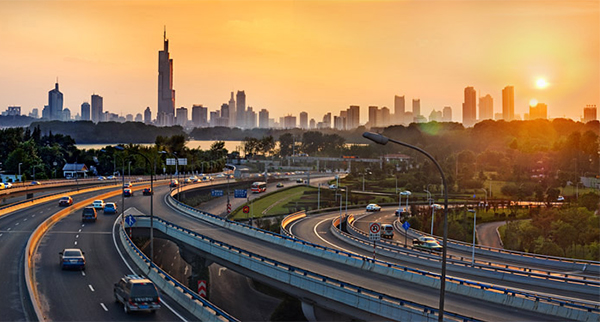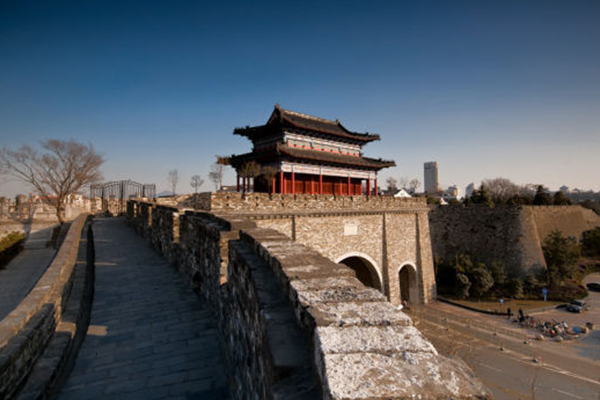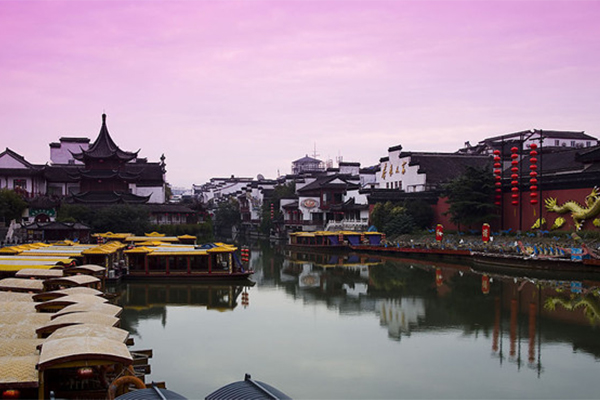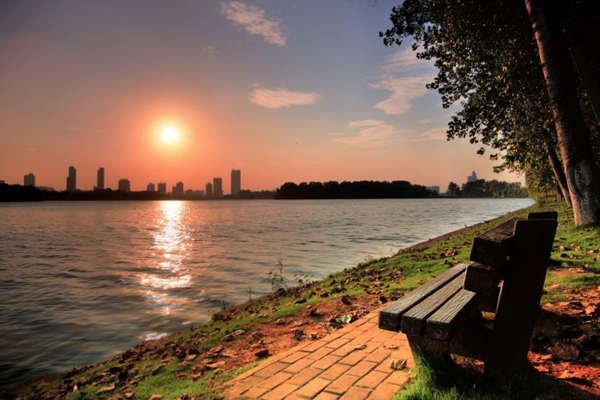Nanjing
Nanjing, called Ning for short, is the capital of Jiangsu province and is a city full of vigor and opportunities. It is a window for you to get a glimpse of the real China. Touring, studying and living there, you will find it changing and growing every day. You will find it a city with Chinese tradition in the background and many modern qualities in the foreground, and you will feel the warm hospitality of the people.

[Photo/nanjing.gov.cn]
In 2019, Nanjing covered 6,587 square kilometers and had a population of 8.50 million.
Nanjing has a prominent place in Chinese history and culture, having been the capital of China on several occasions. Located in the lower Yangtze River drainage basin and the Yangtze River Delta economic zone, Nanjing has long been one of China's most important cities. It is the second largest commercial center in East China after Shanghai and its gross regional domestic product reached 1.48 trillion yuan ($227.75 billion) in 2020, a year-on-year growth of 4.60 percent.
Meanwhile, Nanjing has long been a national center of education, research, transport networks and tourism. There are 45 higher institutes in the city such as Nanjing University, Southeast University, Nanjing University of Aeronautics and Astronautics, and Nanjing Medical University.

[Photo/nanjing.gov.cn]
Location
Nanjing is situated in the lower reaches of the Yangtze River, at 32°03'N and 118°47'E. It borders with the Yangtze River Delta to the east and the hilly areas of south Anhui province to the west, adjacent to the water network of Taihu Lake in the south and the Jianghuai Plain in the north. With the "golden waterway" of the Yangtze River flowing through the city, it is 380 km from the river's estuary to the sea, and about 300 km to Shanghai, the largest city in East China.
Climate
Nanjing is in the monsoon climate area of the north subtropical zone. Its four seasons are distinct, with damp conditions seen throughout the year, very hot and muggy summers, cold, damp winters, and in between, spring and autumn are of reasonable length.

[Photo/nanjing.gov.cn]
Economy
Nanjing has been a center of trade and commerce since ancient times. Its position as a major port city along several important Yangtze trade routes has served it well for centuries, and today its location at the intersection of three major railway lines in the booming Yangtze delta continues to facilitate its growth. In recent years, Nanjing has been developing its economy, commerce, industry, as well as city construction. In 2020, Nanjing realized a GDP of 1.48 trillion yuan, growing 4.60 percent year-on-year. Its revenue in the general public budget was 158 billion yuan, up 7.5 percent. Growth in investment in fixed assets, retail sales of social consumer goods, and total foreign trade imports and exports was 8, 5.5 and 10 percent respectively. The balance of deposits and loans in local and foreign currencies of financial institutions is expected to reach 3.6 and 3.4 trillion yuan, up 2 and 17 percent respectively.
History & Culture
Nanjing, an ancient capital of China, enjoys a worldwide reputation for its history and culture. Archaeological findings show that human ancestors lived in the Nanjing area around 500,000 years ago, and primitive villages took shape 6,000 years ago. Since the 3rd century AD, 10 dynasties and regimes made Nanjing their capital: the Wu, Eastern Jin, Southern Dynasties (Song, Qi, Liang, Chen), Southern Tang, Ming, Taiping Heavenly Kingdom and the Republic of China, hence the titles "Ancient Capital for Six Dynasties" and "Capital City for Ten Dynasties". This history has left abundant historical and cultural relics in Nanjing and made the city one of the four major ancient capitals in China together with Beijing, Xi'an and Luoyang.
Qinhuai River, in the southwest of the city, extends over 100 km. The river used to be the most flourishing part of the city, and in many Chinese novels, it was renowned as a place which nurtured beautiful women and romance. Today, it is a place for people to recall the old splendor of this historical city. All sights there tell a story of the past, present and future of the city.

[Photo/nanjing.gov.cn]
Nanjing has hosted and celebrated many traditional Chinese festivals. On Spring Festival, Nanjing people will post couplets and door gods, and some literati even post a picture of a cock onto the door. On Lantern Festival, lantern shows are offered, together with other activities on Tomb-sweeping Day, spring outings, and Double Ninth Festival, and climbing mountains. It also has some special culture activities, such as Nanjing Baiju Tune, a cruise on Qinhuai River on Dragon Boat Festival, Touch Autumn on Mid-autumn Day, and Welcome Wealth God on Little Year.


 Jiangsu, Our home away from home
Jiangsu, Our home away from home
